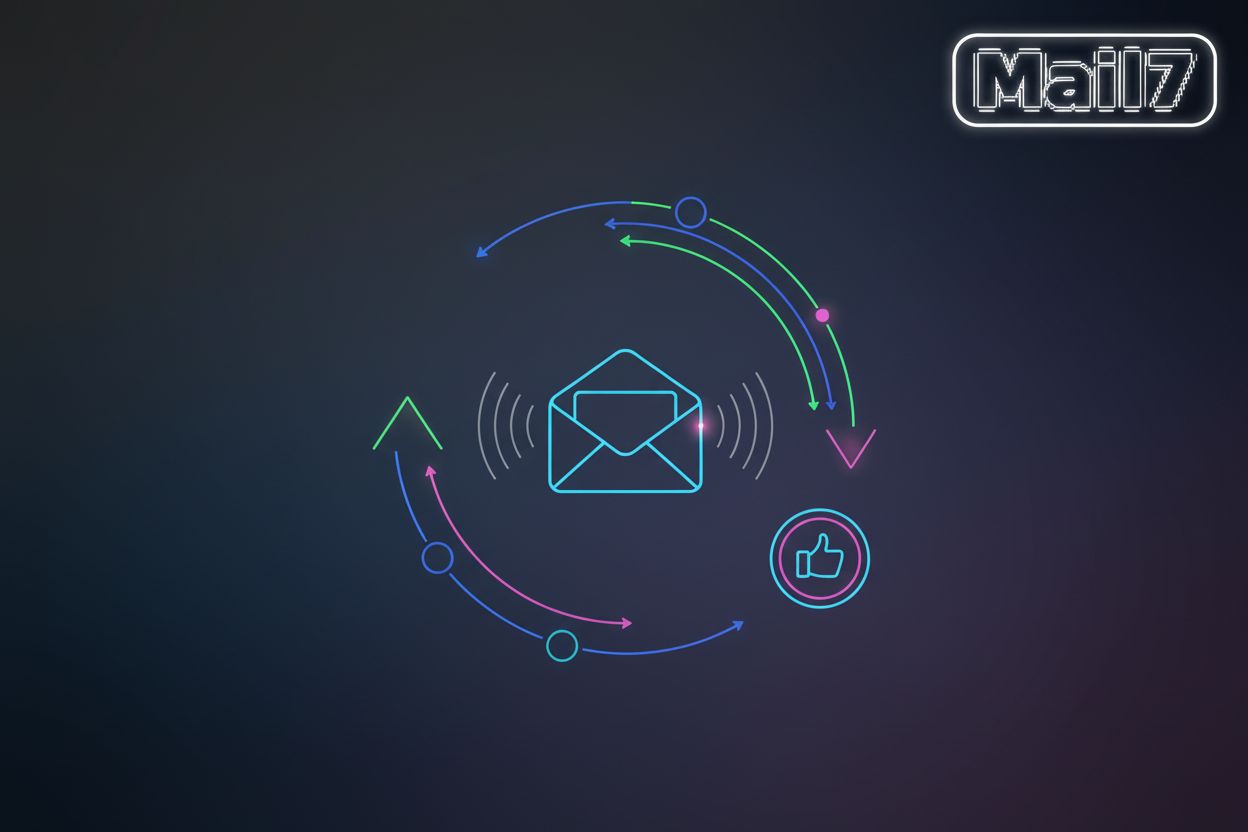Email Address Syntax Validation: A Developer's Guide to Robust Email Testing
Understanding Email Address Syntax: The Foundation
Email addresses: we use 'em daily, but how well do we really get their structure? Making sure you get the basic syntax is the first step to mastering email validation.
Email address syntax is kinda governed by a bunch of standards in Request for Comments (RFC) docs. Specifically, RFC 5322 talks about the Internet Message Format, which includes how email addresses should be put together. These standards give us a framework for how email addresses oughta be built.
An email address has two main bits: the local-part and the domain, split up by the "@" symbol. The local-part is like the specific mailbox name, and the domain tells you which mail server or system is gonna handle the email. These standards say what characters are okay, how long they can be, and the general format.
RFC 3696 gives some clarifications and common ways to look at email address validation, but it's also got some errata that developers should know about. For example, one common errata points out that the original RFCs didn't fully account for the length limitations of certain domain name components, which could lead to validation failures for otherwise valid addresses. Another errata might clarify how to handle specific special characters that were ambiguously defined. Developers should be aware of these because they can cause your validation to incorrectly reject or accept certain email addresses, leading to user frustration or security issues. (RFC 3696 - Application Techniques for Checking and ...) Staying with these RFCs means your validation methods are in line with what most people use.
The local-part can have a bunch of characters, like letters, numbers, and some special ones like `!#$%&'*+-/=?^_``. You can also use quoted strings to put in spaces and other special characters, though that's not super common. Just remember, the local-part might be case-sensitive.
The domain part has to follow hostname rules, using the LDH (letters, digits, hyphen) rule. This means each part of the domain can only have letters, numbers, and hyphens, and can't start or end with a hyphen. Internationalized Domain Names (IDN) are also a thing, letting you use non-ASCII characters in domain names.
The MX records (Mail Exchange records) are super important for the domain. MX records tell you which mail servers are supposed to get emails for that domain. They're a DNS record associated with the domain, not a direct part of the address syntax itself.
It's important to know that a syntactically valid email address isn't always one that can actually be delivered. An email address can look right according to the rules but still bounce if the mailbox doesn't exist or the domain is wrong. Like David Gilbertson says, people are more likely to type a "wrong and valid" email than one that's just plain wrong.
Just checking syntax isn't enough to know if an email will get delivered. Things like checking if the mailbox actually exists are needed, but callback verification has its own problems. It can be inaccurate because some mail servers might not respond correctly, or they might even pretend to exist to block spam. Plus, it can be a security risk if not handled carefully, as it might expose information about your mail server.
Getting the syntax right is the first step, but you also gotta think about deliverability when you're building solid email validation. Next, we'll get into regular expressions.
The Perils of Perfect Validation: Why Regex Isn't Enough
Did you know that even the most complicated regular expressions can miss invalid email addresses? Relying only on regex for email validation is kinda risky.
Regex patterns get tangled up with how complex email standards are.
Regex patterns often turn into a big mess.
Trying to make regex both complex and accurate is a real pain.
Just checking syntax isn't enough.
Checking deliverability and if the mailbox is real are super important.
Think about other ways, like sending confirmation emails.
Like David Gilbertson mentioned, people often type "wrong and valid" emails, which regex can't catch. Instead of wasting time on super complex regex, focus on whether the email can actually be delivered.
Activation emails are a more reliable way to verify. Now, let's look at other validation methods.
Practical Validation Techniques for Developers
Client-side validation gives you a quick first check. But, did you know it's super easy to get around? It tells users about simple errors right away but isn't foolproof.
Use HTML5's
<input type="email">for basic syntax checks. Browsers will automatically look for "@" and a domain.It makes the user experience better by catching simple mistakes early.
This is just the first line of defense, not the whole story.
Use JavaScript for real-time validation. You can give custom error messages.
For example, a script can check for bad characters or domain formats.
Remember, JavaScript validation can be bypassed if users turn off scripting.
For instance, if a user types
john.doe@example, you could show a message like: "Oops! That doesn't look like a valid email address. Make sure it has an '@' symbol and a domain name (like .com or .org)."Always remember, JavaScript validation is bypassable if users disable scripting.
Client-side validation isn't secure. Users can get around it.
Never use it as your only validation layer.
Always combine it with server-side checks.
Client-side checks make things nicer for users but need a solid backend. Next, let's check out server-side validation.
Advanced Testing and Verification Strategies
Did you know you can really boost email validation with some advanced tricks? These methods go beyond just checking syntax to make sure emails get delivered better and are more secure.
- SMTP Testing: Check your email server setup using tools like swaks or openssl. Look at SMTP response codes to figure out connection problems.
- Disposable Email Detection: Block temporary email addresses using DEA lists and apis. Cut down on spam and abuse by spotting and filtering out these addresses. DEA stands for Disposable Email Address, and blocking them is important to reduce bot registrations and spam.
- Email Verification APIs: Use third-party apis for thorough validation. Check out features like syntax checks, deliverability verification, and DEA detection.
These methods make your email validation process stronger, protecting against possible threats.
Next up, we'll talk about SMTP testing.
Mail7: The Ultimate Email Testing Solution
Ready to change how you do email testing? Mail7 has a complete solution for developers. Let's see how it makes email testing easy.
- Disposable Email Addresses: Easily make temporary email addresses with Mail7's api. Make sure you can test everything without messing up your main inbox.
- Real-Time Access: Get emails and attachments right away through Mail7's easy-to-use interface. Quickly check content and how things work.
- Automation: Automate the whole email testing process with Mail7's strong api endpoints. Connect it to your testing setup for better efficiency.
- Enterprise-Grade Security: Keep sensitive info safe and meet requirements with Mail7's security features. This includes things like data encryption, compliance with industry standards (like GDPR or HIPAA, depending on your needs), and strict access controls to ensure only authorized personnel can access your data.
Mail7 makes workflows smoother. Developers can now focus on building and improving their apps.
Next, we'll get into more testing solutions.
Internationalization (EAI) and the Future of Email Validation
Did you know email addresses can have characters that aren't English? Internationalization (EAI) is changing how we validate email addresses. Let's look at what's coming.
Email Address Internationalization (EAI) is all about supporting different character sets.
SMTPUTF8 lets you use non-ASCII characters.
Validating these addresses means you need updated methods.
EAI messes with the old regex patterns.
Updated libraries need to support UTF-8.
Emails with mixed encoding can be tricky.
For example, δοκιμή@παράδειγμα.δοκιμή is a valid internationalized email. Supporting UTF-8 is crucial for EAI because it allows the correct interpretation and processing of the wide variety of characters used in internationalized email addresses, ensuring they display and function properly across different systems.
Staying in the loop is key. Use tools that can handle internationalized addresses. Test your apps really well. Next, we'll talk about security.
Best Practices and Common Pitfalls
Email validation: easy to ignore, hard to get perfect. Here's how to dodge common mistakes and build a solid plan.
Don't use regex patterns that are too strict, they might reject valid email addresses.
Ignoring internationalized email addresses limits your reach globally.
Client-side validation alone isn't secure; use it with server-side checks.
Not giving clear error messages makes users mad.
Not testing with different email providers causes inconsistent results.
Mix syntax checks, deliverability testing, and mailbox verification.
Focus on deliverability testing to make sure emails actually arrive.
Give clear error messages to help users out.
Update libraries and apis for the newest standards.
Keep an eye on how your validation is doing to make it better.
Balance validation with making things easy for users so they don't get frustrated.
Don't put in unnecessary limits on email formats.
Offer other ways to verify for users who are having trouble.
Give good support for validation errors.
To stay up-to-date on email validation standards and api updates, you can follow RFCs as they're released, subscribe to developer newsletters from email service providers or security organizations, and regularly check the release notes for the libraries and apis you're using.
By looking at these things, you make things more reliable.






